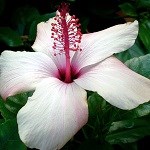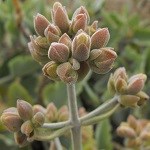Hawai‘i’s Unique Isolation and Endemic PlantsBecause Hawai‘i is located approximately 2,300 miles from the nearest continent, it is the most isolated place on Earth. As a result, plants and animals arrived rarely and evolved in isolation from the rest of the world. This led to many of Hawai‘i’s plants becoming endemic, meaning they are found nowhere else on the planet. Seeds and spores would occasionally arrive, often carried by migrating birds or insects caught in high winds. With few natural threats, these early plants thrived. Over time, they evolved without needing defense mechanisms typically found in other environments. For example, Hawaiian holly is spineless, Hawaiian nettles don’t sting, and Hawaiian mint has no strong taste, as there were no grazing animals to fend off. However, the arrival of Polynesians and later Europeans changed the landscape. Forests were cleared, and non-native plants and animals were introduced, resulting in the extinction of many of Hawai‘i’s unique endemic species. 
The Bishop Museum's Ethnobotany DatabaseTake a look at the Bishop Museum's online ethnobotany database to learn all about plant life in Hawaii and how plants have been used for medicine and/or other purposes.

Flora of the Hawai'ian IslandsThe Smithsonian National Museum of Natural History has a database all about the flora of the Hawaiian Islands. 
Images of Hawai'ian PlantsThis is a database of images of plants that can be found here in Hawai'i. 
Plant Threats to Pacific EcosystemCurious to know what plants are threatening the Pacific ecosystem? This database will show you. 
Native Hawai'ian PlantsThis database talks all about Hawai'i's native, or endemic, plants, and fully describes the plant characteristics, flower characteristics, growth requirements, and environmental information. |
Last updated: September 18, 2024
Success
Thank you. Your feedback has been received.
Error
alert message

